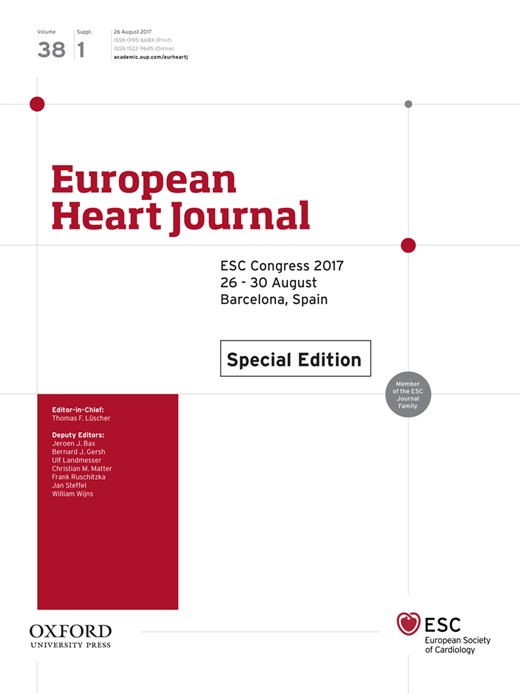-
PDF
- Split View
-
Views
-
Cite
Cite
S.P. Schumacher, W.J.A. Stuijfzand, P.S. Biesbroek, P.G.H.M. Raijmakers, R.S. Driessen, P. Van Diemen, R. Nijveldt, A.A. Lammertsma, A.C. Van Rossum, A. Nap, N. Van Royen, P. Knaapen, P866
Effects of successful percutaneous coronary intervention of chronic total occlusions on myocardial perfusion and left ventricular function, European Heart Journal, Volume 38, Issue suppl_1, August 2017, ehx501.P866, https://doi.org/10.1093/eurheartj/ehx501.P866Close - Share Icon Share
Background: Chronic total occlusions (CTO) are observed in up to 30% of patients with known or suspected coronary artery disease. Percutaneous coronary intervention (PCI) of CTO is technically challenging and its salutary effects are questioned.
Purpose: The aim of the present study was to investigate the effects of successful PCI CTO on absolute myocardial blood flow (MBF) and functional recovery.
Methods: Patients with a documented CTO were prospectively examined for ischemia and viability with (15O)H2O positron emission tomography (PET) and late gadolinium enhancement cardiac magnetic resonance imaging (LGE-CMR). Sixty-nine consecutive patients, in whom PCI was successful, underwent follow-up PET and CMR after approximately 12 weeks to evaluate potential improvement of MBF as well as regional and global systolic function.
Results: After PCI, stress MBF in the CTO area increased from 1.22±0.36 to 2.40±0.90 mL·min-1·g-1 (p<0.001), whilst stress MBF in the remote area also increased significantly between baseline and follow-up PET (2.58±0.68 to 2.77±0.77 mL·min-1·g-1, p=0.01). The ratio of stress MBF between CTO and remote area was 0.49±0.13 at baseline and increased to 0.87±0.24 at follow-up (p<0.001). MBF defect size of the CTO area decreased from 5.12±1.69 to 1.91±1.75 myocardial segments after PCI (p<0.001). Left ventricular ejection fraction significantly increased (46.4±11.0 vs. 47.5±11.4%, p=0.01) at follow-up, whereas mean systolic wall thickening of the myocardium subtended by the CTO artery did not improve after PCI (p=0.18). There was no relation between the extent of LGE (%) and change of systolic wall thickening at follow up (R=0.01, p=0.69), nor was improvement in stress MBF associated with recovery of systolic wall thickening (R=0.08, p=0.53).
Conclusions: The vast majority of CTO patients with documented ischemia and viability showed significant improvement in stress MBF and a reduction of ischemic burden after successful percutaneous revascularization with only minimal effect on left ventricular ejection fraction.



